This vegan sunflower seed pesto recipe makes it fun and easy to incorporate pesto into your meals without the worry of a reaction! The key is in finding the right alternative, and while most nuts and seeds share of some of the same nutrients, sunflower seeds are an easy alternative to tree nuts. Here's how to make pesto sauce without pine nuts or pecans, and without losing that unique creaminess they add.

Jump To
About this recipe
Nut-free pesto. Most of the pesto recipes out there use pine nuts, pistachios, or pecans (my favorite), so at the request of some nut-free readers, I've developed a nut-free pesto you can use on meats, pastas, tolerated breads, and more. Although there's some disagreement as to whether sunflower seeds are a "histamine liberator," most people tolerate them fine on a low histamine diet.
Nutrient dense. Beyond the antihistamine properties of basil, the sunflower seeds in this recipe offer a bevy of heart-healthy fats and are about 20% protein. In addition, they provide fiber, magnesium, and vitamin E.
Easy to freeze. Just like my basic pecan pesto recipe, you can freeze this sunflower seed pesto in patties in the freezer, then stack them in a container for long-term storage.
Uses up extra basil. If you're like me and enjoy growing tons of herbs each summer, this sunflower seed pesto is a great way to use up all that extra basil (though I won't tell anyone if you bought it from the market, either!).
Ingredients
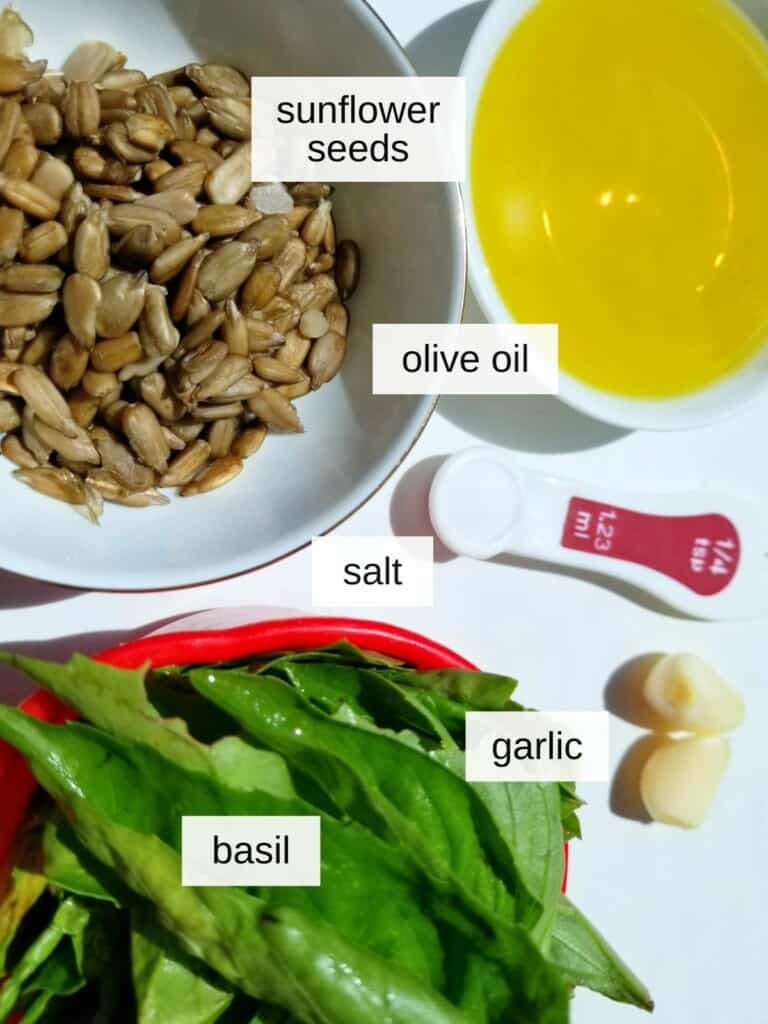
Sweet Basil: this is the base for the sauce, and the most common type of basil you'll find in the garden or the supermarket. It's a good choice for low histamine sauces because it packs an antihistamine punch.
Sunflower Seeds: when soaked & dried, making a basil pesto with sunflower seeds adds an extra umami element to the entire sauce and anything you put it on.
Raw Garlic: similar to the sunflower seeds, using raw garlic adds an umami element to the sauce that really complements meats and root vegetables.
Sumac: this red-hued spice is actually a ground-up dried berry with strongly antihistamine and acidic properties. It takes the place of lemon juice, which is normally not used in pine nut pesto, but which makes up for the extra protein in sunflower seed pesto. This is an optional but recommended ingredient; a good alternative is amchur.
How to make sunflower seed pesto: step-by-step instructions
Before making the pesto itself, if you're on a low histamine diet or otherwise have a sensitive stomach, you'll want to soak and dry the sunflower seeds overnight. This reduces the levels of antinutrients in the seeds, and overall makes them easier on your digestive system. See step 1.
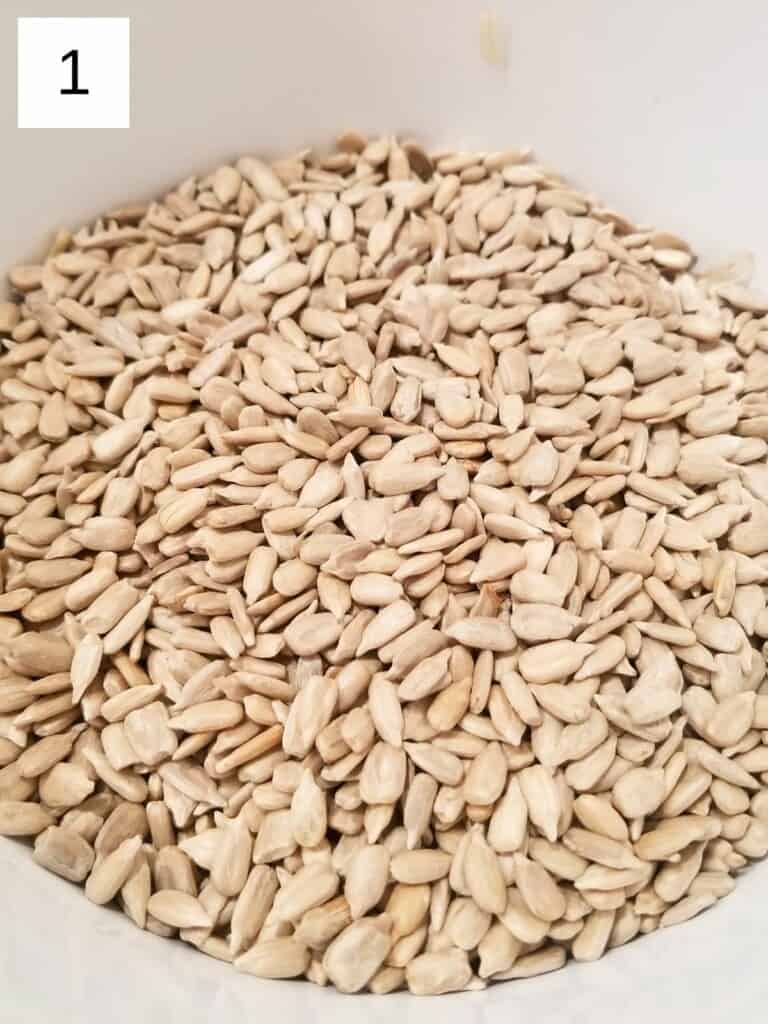
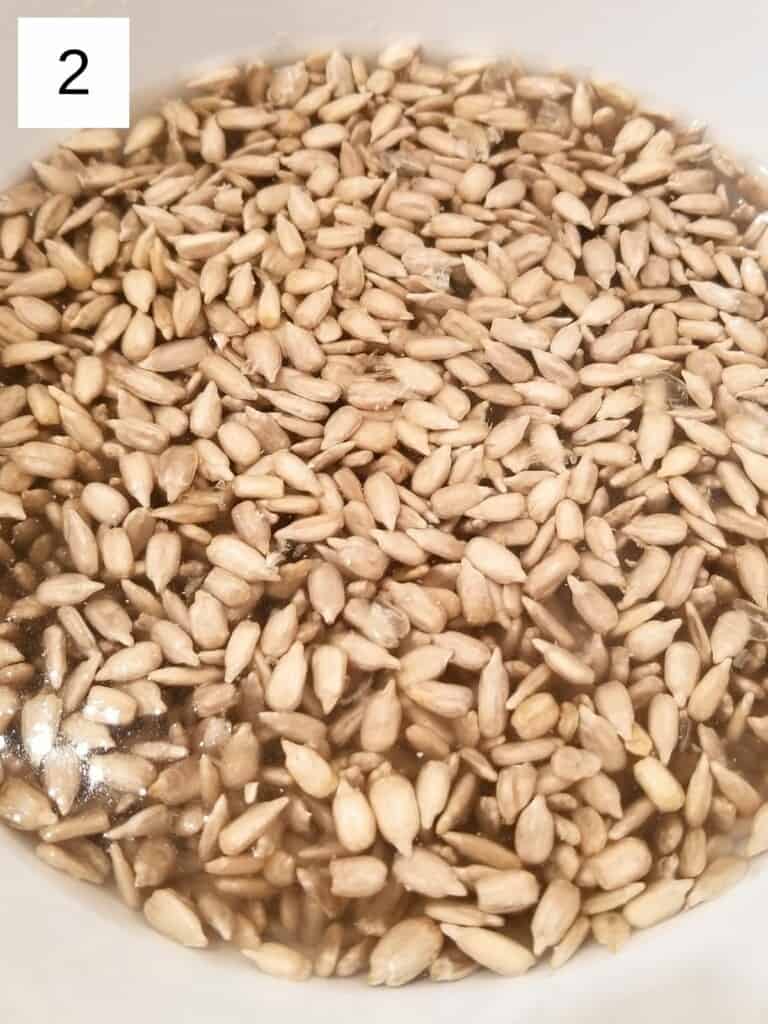
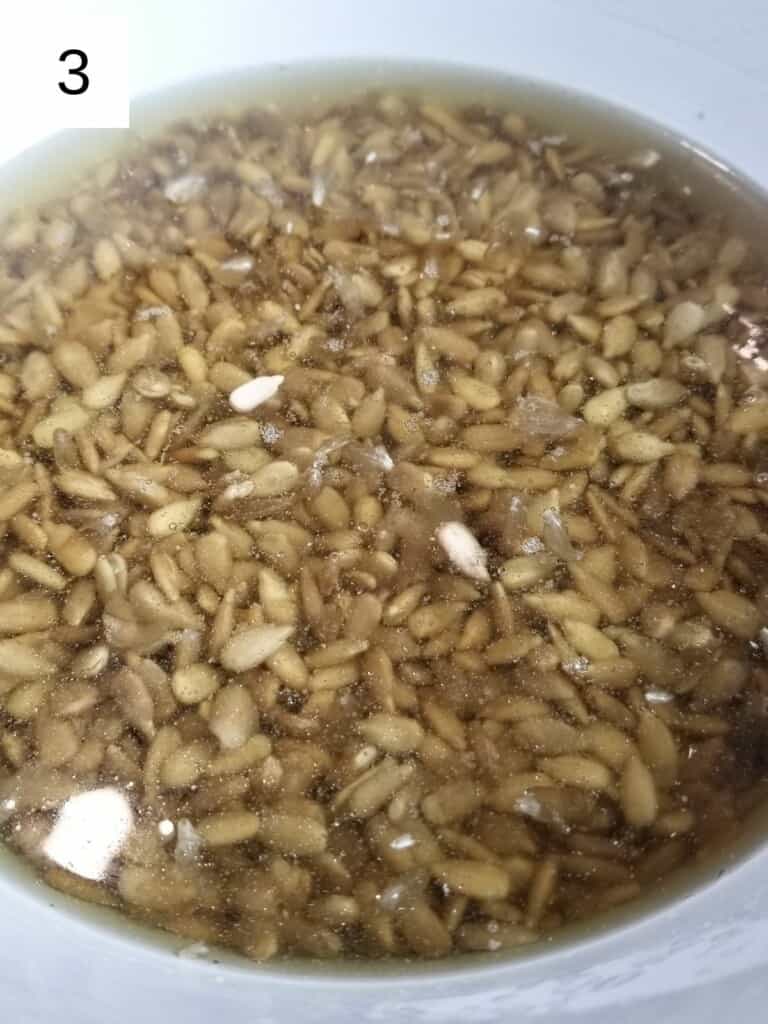
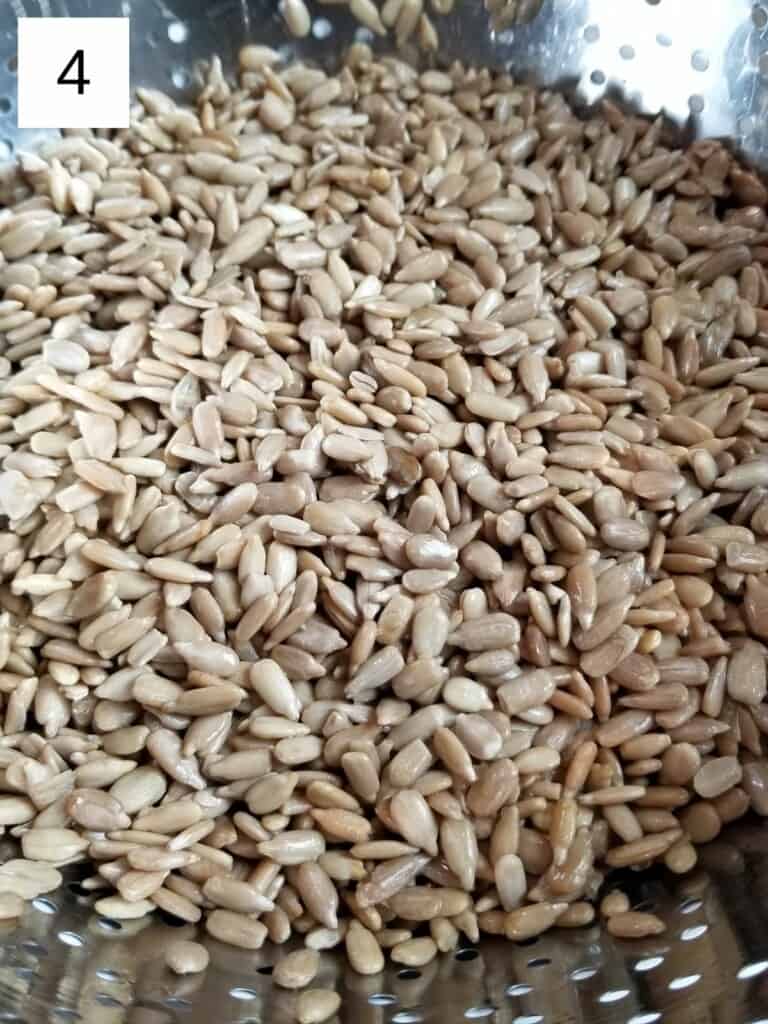
Step 1. To soak raw sunflower seeds, pour them all into a bowl and cover them with at least two inches of water; too much is better than too little. Leave them to soak, covered, either overnight or for 2+ hours. They will absorb some of the water. Once they're done, drain them in a colander and then dry them in a single layer on a baking sheet.
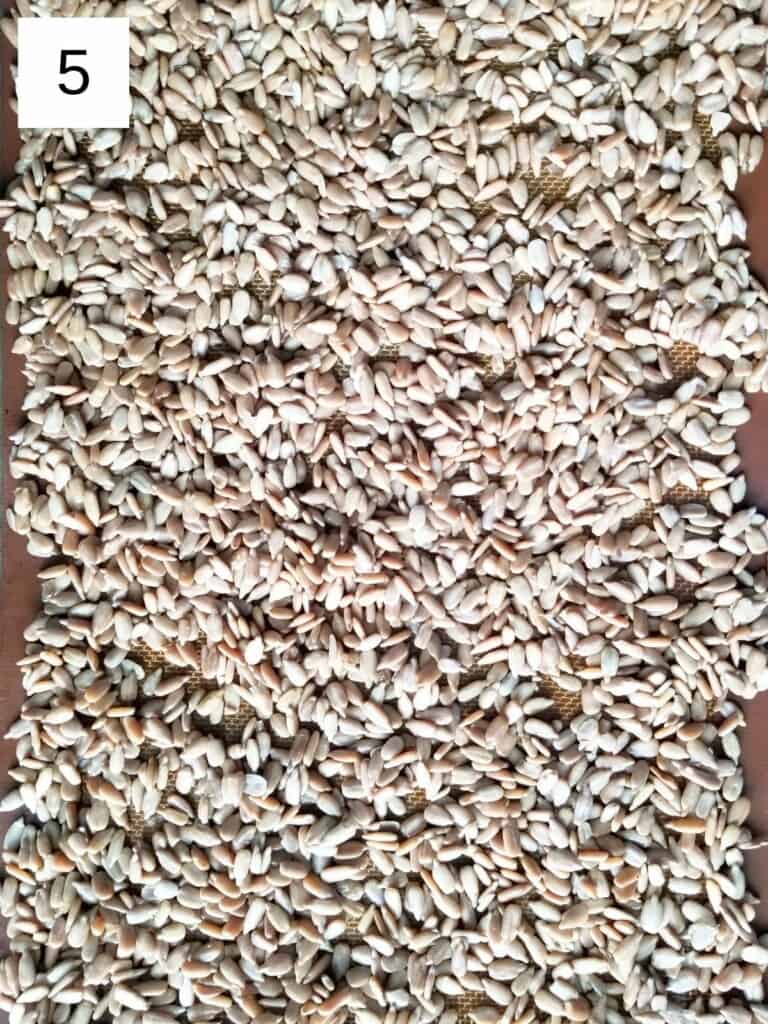
You can do this in the oven on a very low temp (around 170°F/75°C); it will take about 2-3 hours. You may need to use more than one baking sheet, but it's fine to put them on different shelves in the oven to dry all together. You'll know they're dry when you bite into a seed and it's no longer chewy, but has a mild snap to it. All the seeds should also feel quite dry, with no more spots of moisture when you run your hand across the top. Now measure out 3 Tablespoons and store the rest of your seeds in an air-tight container in the fridge.

Step 2. Pluck off all your basil leaves from the stems, avoiding getting any flowers or seeds into the mixture. Place all your leaves into a colander and wash them, then measure out 1 Cup of leaves, tightly packed, and add it to the bowl of your food processor.
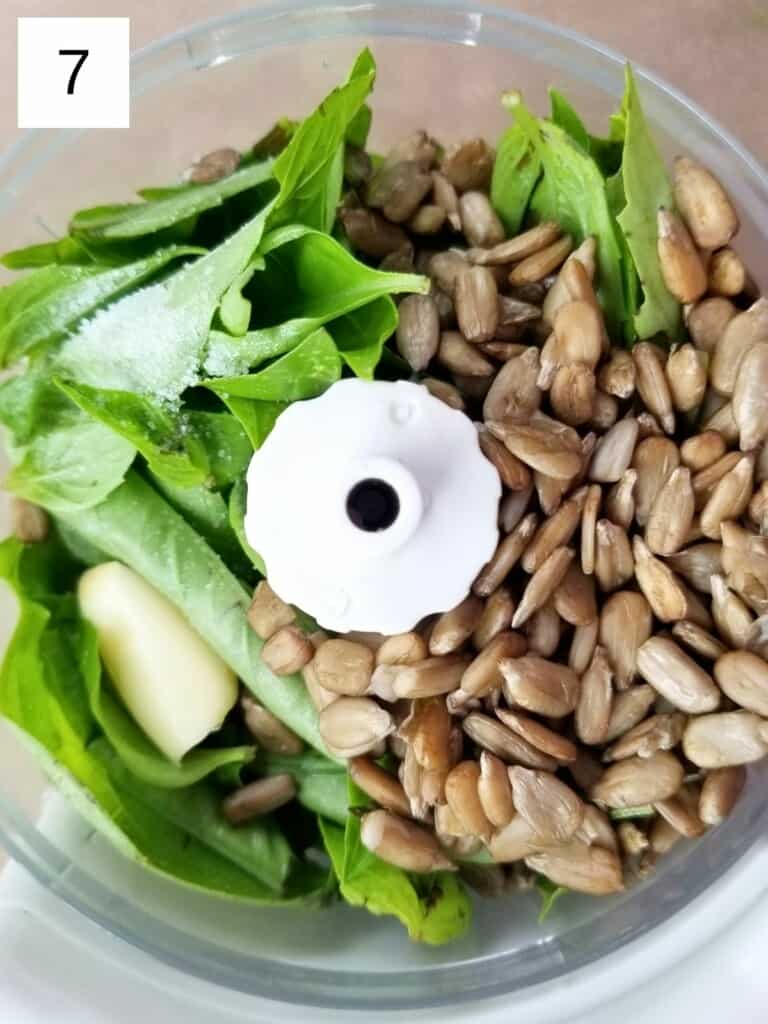
Step 3. Add the garlic clove, sunflower seeds, salt, sumac, and 1 Tablespoon of oil to the basil leaves. Put on the lid and pulse the ingredients for 15-20 seconds, until all the basil leaves have been lightly chopped and coated in oil. If you have a really high-powered food processor or Vitamix, you'll probably only need 1 more Tablespoon of oil, if that.
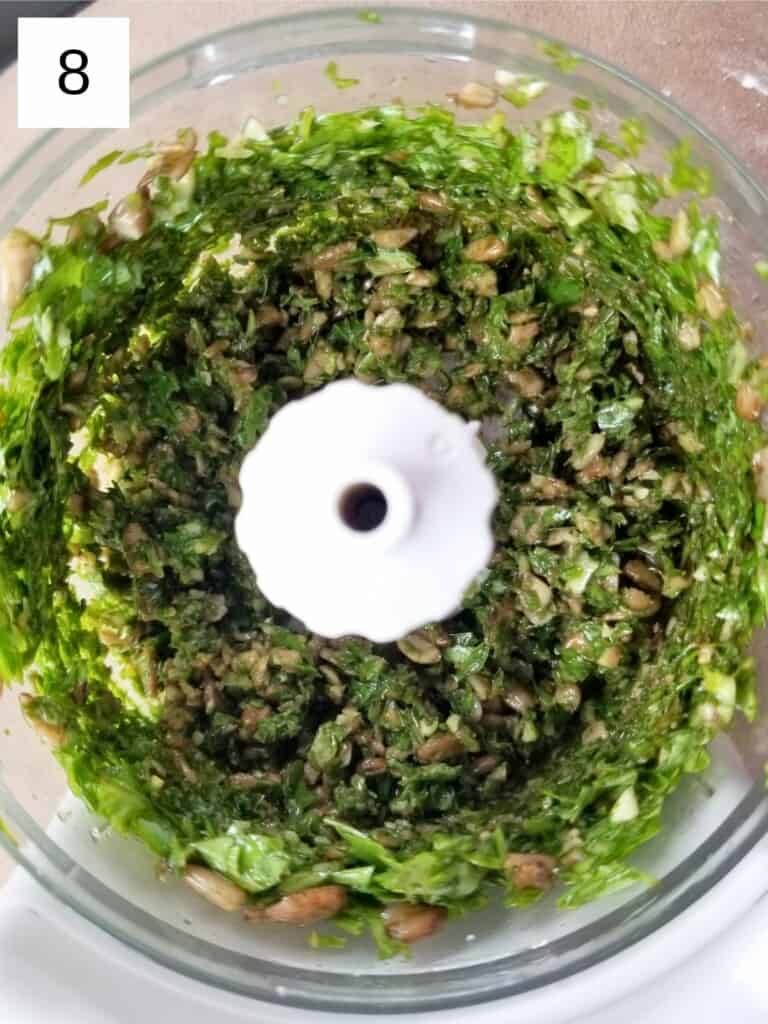
Step 4. Next, slowly add in all the rest of your oil and blend until very smooth, for about 30 seconds-2 minutes. Voila! Your sunflower seed pesto is all done.
Recipe notes & tips
Basil. I have only tried this recipe with sweet basil, but you can use any varietal that tastes 'normal,' like Italian, Opal, Purple, or Large-Leaf Basil.
Sun butter. If the thought of soaking and drying your sunflower seeds feels exhausting, you can use sun butter in their place, but only if it's a brand you've tolerated before & the only ingredient is sunflower seeds.
Keeping it green. Commercial jarred pestos are usually made with basil that's been blanched— boiled for a few seconds, then immediately put on ice— in order to preserve their vibrant green color. Unfortunately this lessens their flavor tremendously, so while this sunflower seed pesto won't be as green as a store-bought one, it will be much more flavorful.
What to do with sunflower seed pesto
- stir it into hot mashed potatoes
- slather it on grilled chicken
- mix it into scrambled eggs
- baked salmon with a pesto-lemon rub
- spread it on gluten-free crackers with a dollop of fresh cheese
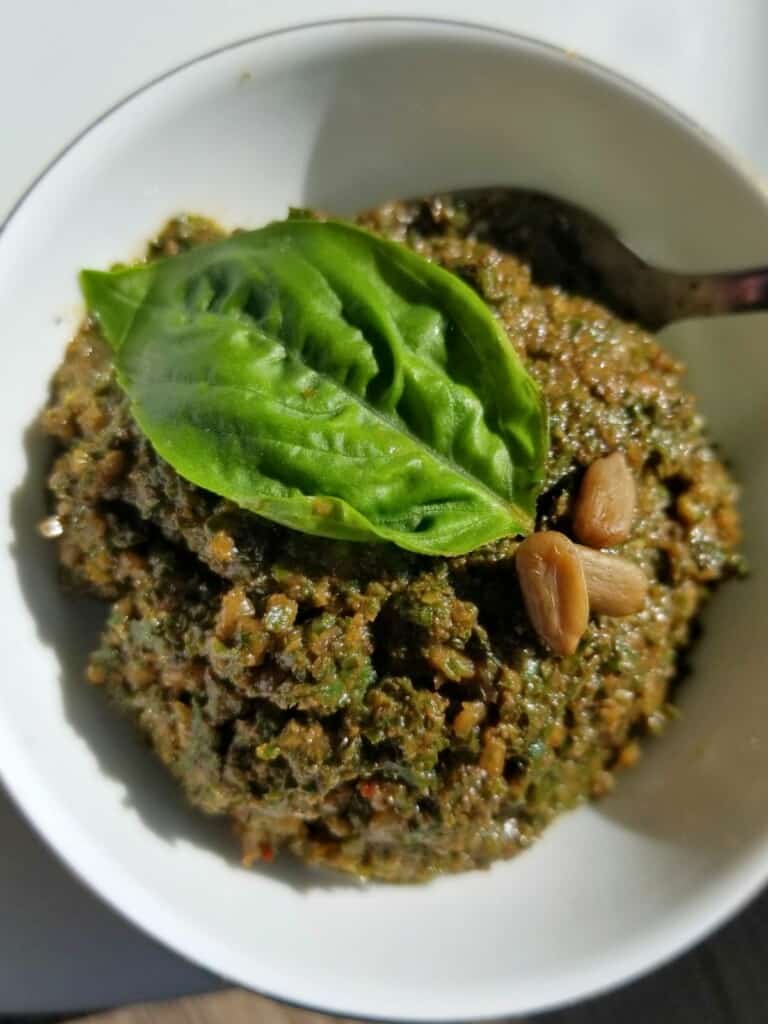
FAQ about sunflower seed pesto
Sunflower seed pesto can last for up to one week in the fridge or up to two years if properly stored in the freezer.
Yes, you can make pesto with sunflower seeds instead of pine nuts, but you will need to use slightly less sunflower seeds as they have a very strong flavor.
At the moment there are no commercial pesto sauces made with sunflower seeds instead of pine nuts.
Yes, you can freeze sunflower seed pesto in patties or in ice cube trays, and then stack them inside air-tight freezer containers for up to 2 years.
Homemade Sunflower Seed Pesto Recipe Card
As always, if you like the recipe, I always appreciate a review or comment!
📖 Recipe
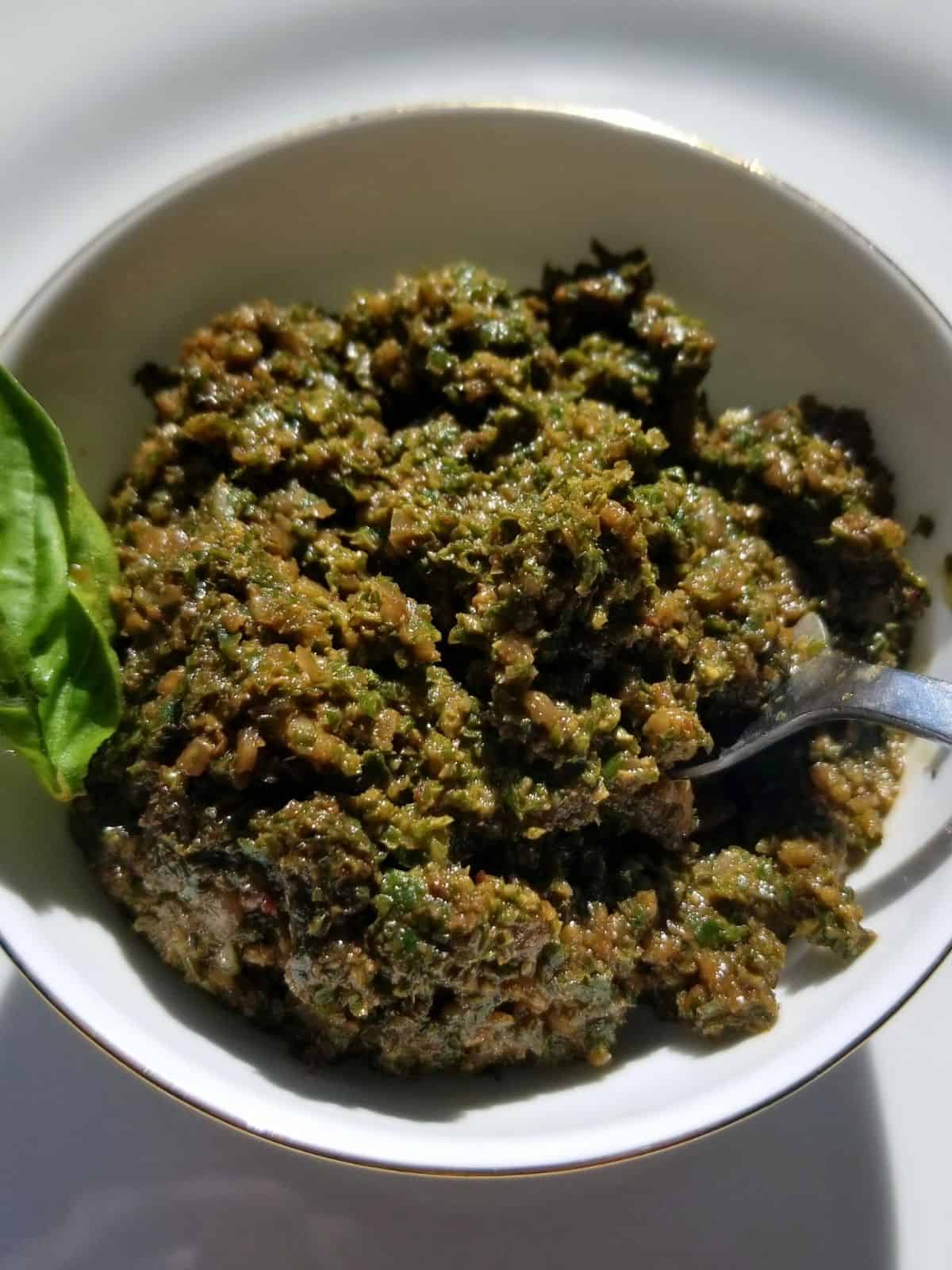
Easy Sunflower Seed Pesto (Dairy-Free)
Ingredients
- 1 cup basil
- 3 Tablespoons raw sunflower seeds soaked & dried
- 2-3 Tablespoons olive oil
- 1 small clove of garlic
- pinch of salt
- ¼ teaspoon sumac or amchur optional but recommended
Instructions
- Before starting, I recommend overnight soaking & drying your sunflower seeds to reduce levels of antinutrients. Then pluck off & gather all your basil leaves, discarding stems.
- Measure out 1 Cup of basil leaves, tightly packed, and add it to the bowl of your food processor.
- Add the garlic, sunflower seeds, salt, sumac, and 1 Tablespoon of oil to the basil leaves. Put on the lid and pulse the ingredients for 15-20 seconds, until all the basil leaves have been lightly chopped and coated in oil. If you have a really high-powered food processor, you'll probably only need 2 Tablespoons of oil total.
- Then slowly add in the rest of the oil and blend until smooth, about 1-2 minutes. Once done, your sunflower seed pesto is all ready to be used!
Notes
Nutrition
Save this post for later!

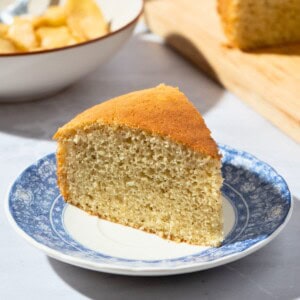











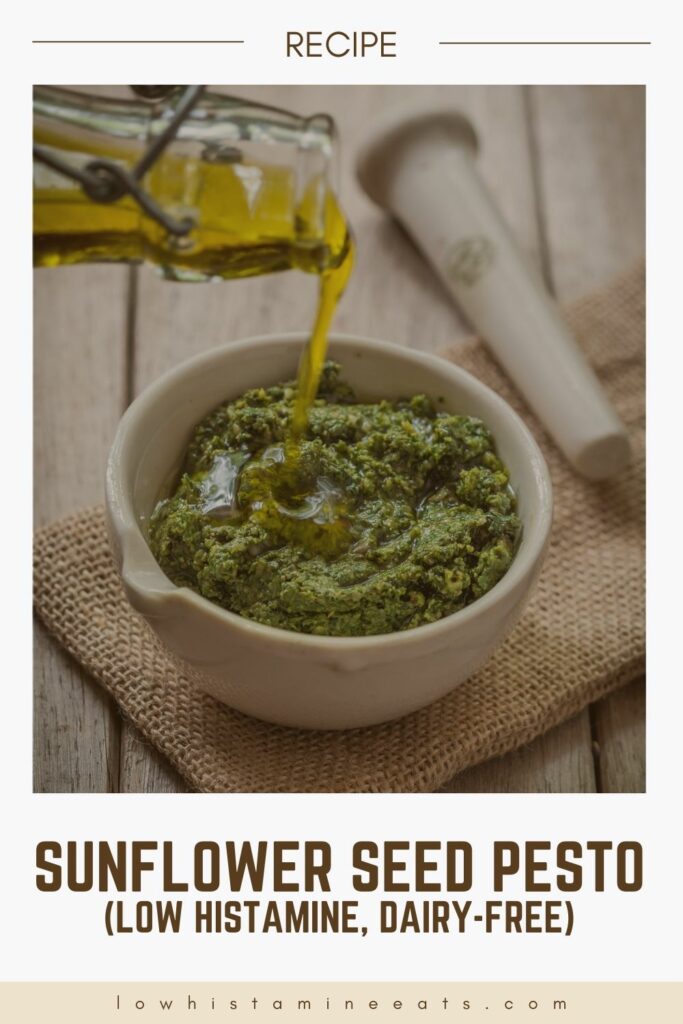

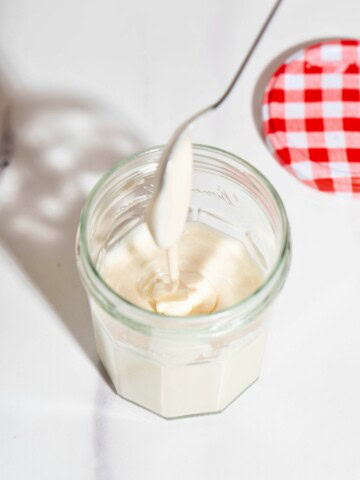

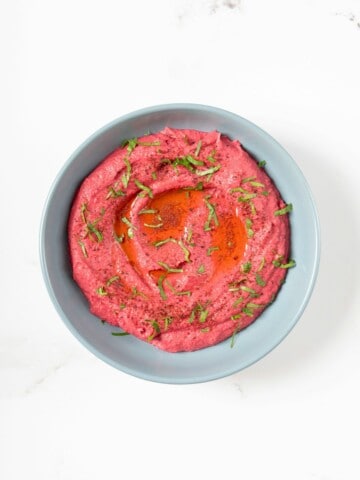
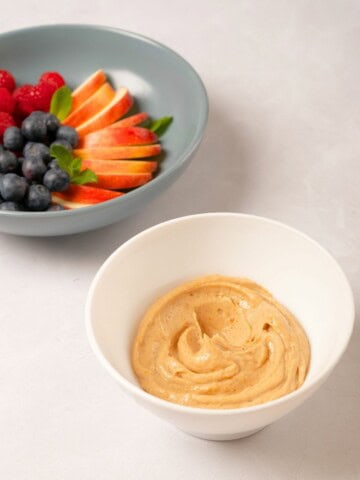
Comments
No Comments